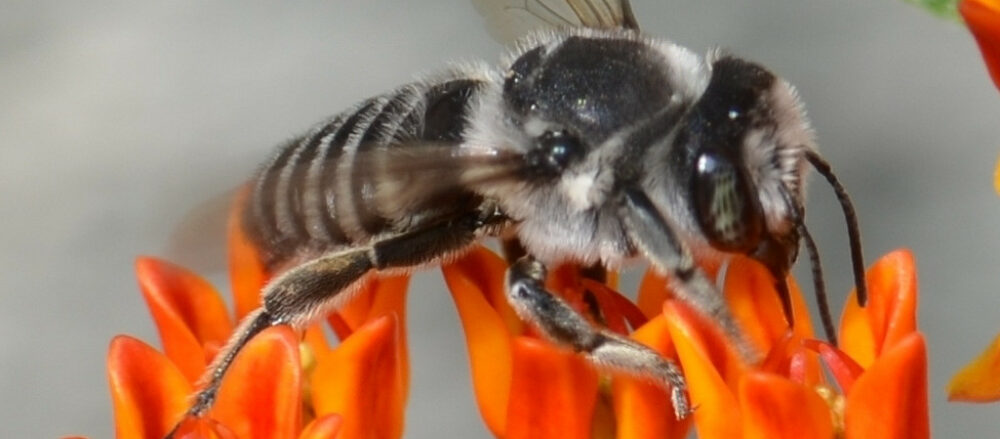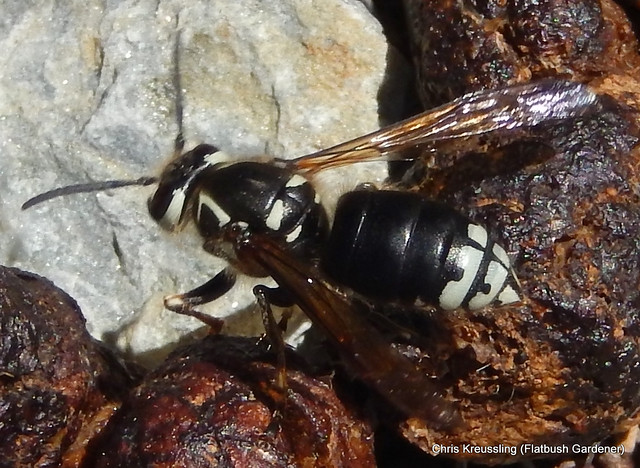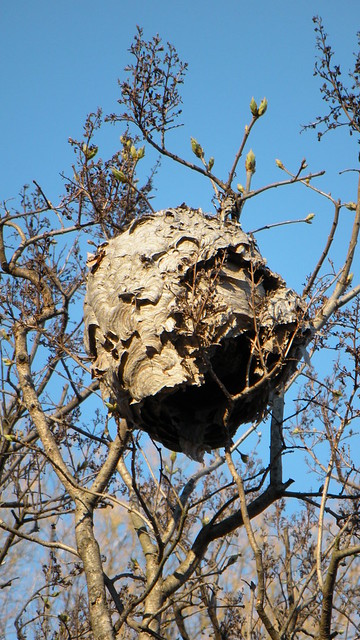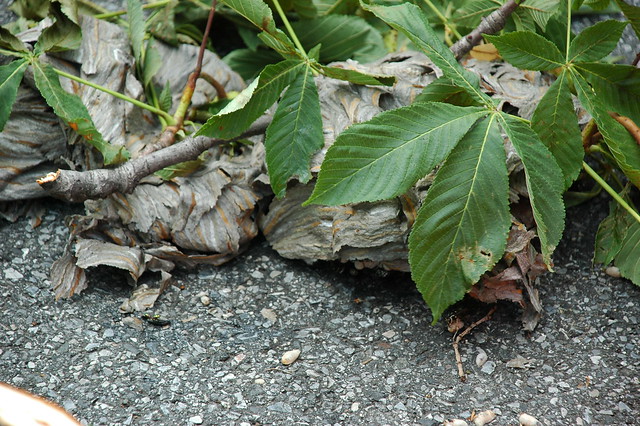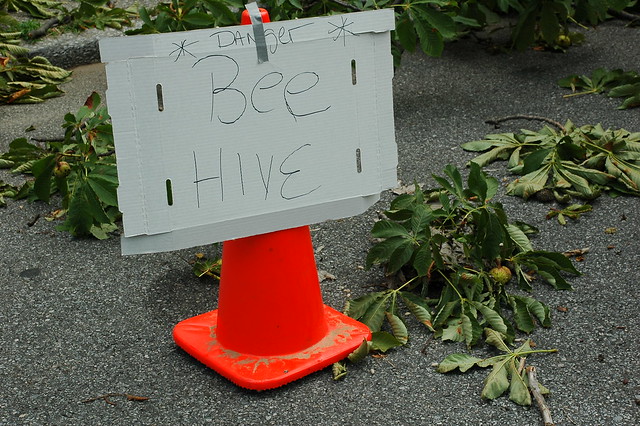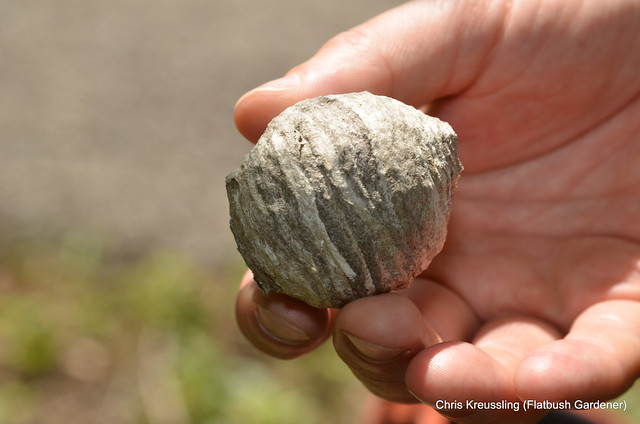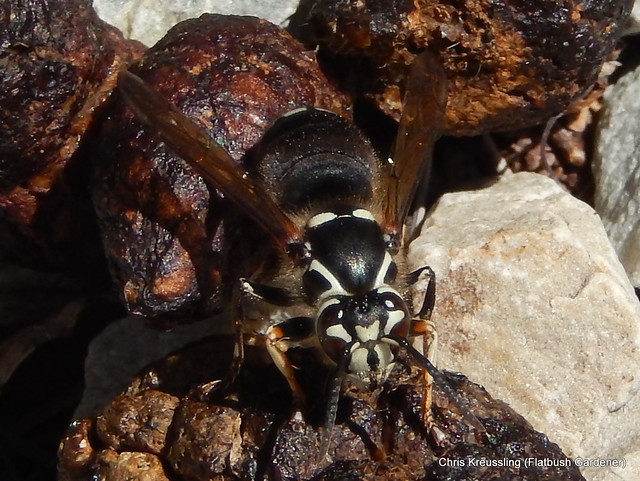Yesterday, I transplanted a small piece of Carex pensylvanica, Pennsylvania sedge, from my sister’s property in Ocean County, New Jersey. This species is common on her property.
She lives in the pinelands of New Jersey. The canopy is pine and oak. The duff layer – the natural “mulch” of dead plant material deposited on top of the soil – is composed of mostly pine needles, with some oak leaves.
Here’s a view of the clump I extracted.
And here’s the “back” view, where the blade of the spade I was using sliced through.
I only just realized I had a nice slice of the upper soil horizons.
The slats of the tabletop are 2″ wide. The entire depth of the soil slice is only about 3″, 4″ including the duff layer.
The white is fungal mycelium that has colonized the duff layer, starting the process of decomposition.
After I moved this clump from the table, I noticed tiny beetles, at least two different species, had clambered off. They fell through the slats before I could photograph them or otherwise observe them more closely for identification.
This small slice represents at least five different macro-species – pine, oak, sedge, and beetles – and one micro: the fungus. If we could somehow inventory all the micro-invertebrates and micro-organisms, there might be hundreds, or thousands, of species in this photo.
It’s tempting to think of species as singular “things,” to be contained in our cabinets of curiosities, our checklists, our collections. Any species is not any one thing, but a population, containing genetic diversity that slowly shifts and drifts across space and time. Each species is part of a larger whole, an unbounded fractal of complex relationships.
Yes, I grow many native plant species in my garden. For one reason, I can learn to recognize them. I never want to forget how artificial my construction is. However I may hone my garden, whatever beauty I can construct here, and pleasure I may offer from it, it doesn’t compare to the transcendence I experience of wild things in their natural habitats. All this diversity at home reminds me of how much more there is, still, in the world, and how important it is to protect it.
